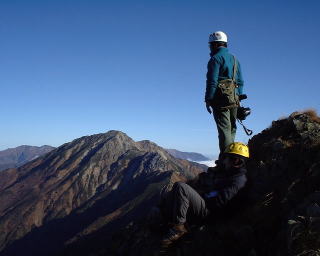
View from Mt. Kashimayarigatake (Japan Alps)
Topics
- Geological history of the Northern Japan Alps
- Silicic Magma
- Caldera/Cauldron
- Ignimbrite/Ash-flow
Outline of the Quaternary volcano-plutonic complex in the Northern Japan Alps
The Quaternary Hotaka-Takidani volcano-plutonic complex (VPC), which consists of "the Hotaka Cauldron" and an immediately subjacent pluton of "the Takidani Granodiorite," is exposed in the eastward tilting block of the Northern Japan Alps.
A large-volume (> 400 km3) dacitic ignimbrite and air-fall tephra erupted from the Hotaka area with forming the cauldron 1.76 Ma.
The pluton, having an area of 13 by 4 km2, intrudes the ignimbrite that infills the cauldron.
U-Pb, K-Ar and FT ages of the pluton are 1.4 to 0.9 Ma, which fact indicates that the emplacement and cooling of the pluton occurred during the Early Pleistocene.
Postemplacement tilting of the Northern Japan Alps caused rapid denudation of the Takidani Granodiorite as well as the Hotaka Cauldron, providing us an excellent opportunity to investigate a close temporal and spatial relation between volcanic and plutonic processes.
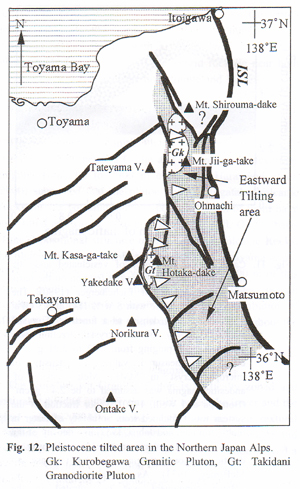
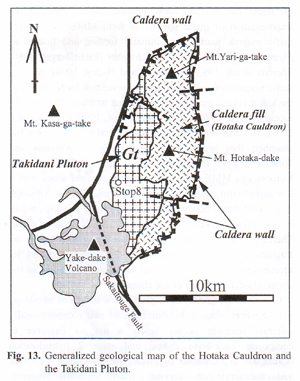
Maps showing the Hotaka-Takidani VPC.
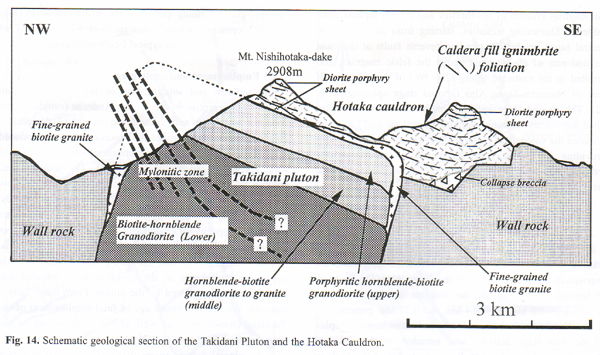
Cross section showing the Hotaka-Takidani VPC.
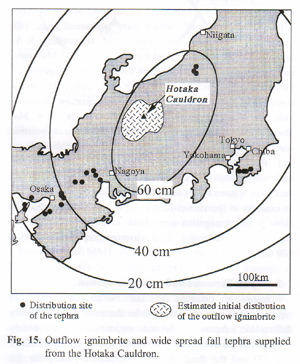
Ignimbrite and air-fall tephra from the Hotaka Cauldron.
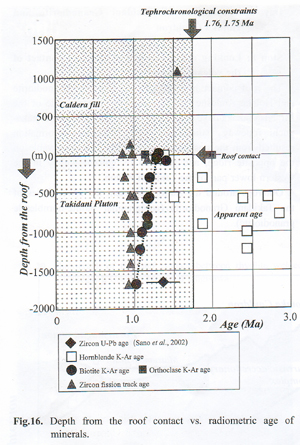
Emplacement and cooling ages of the Takidani Granodiorite.
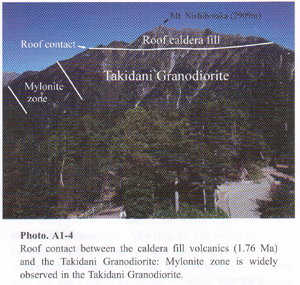
Roof contact between the Takidani Granodiorite and the ignimbrite infilling the Hotaka Cauldron.
All figures are cited from Harayama et al. (2003).